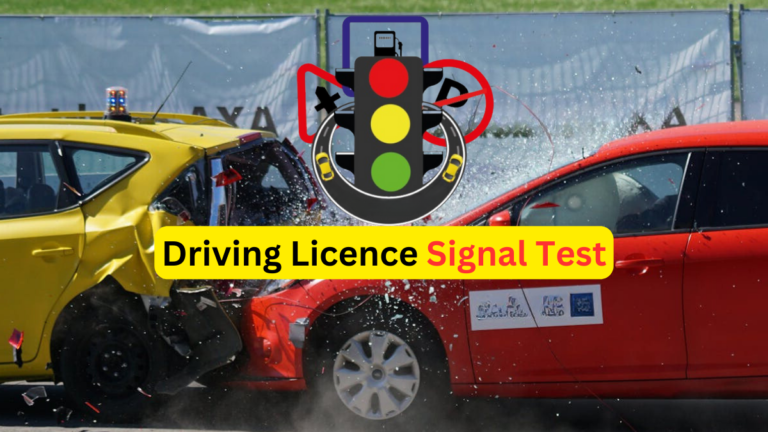
Confirmation that Pakistan has become the first client for the Chinese J-10 C4++ generation single-engine fighter. Comparing J10-C vs SU-30MKI, It raises multiple questions regarding the future of the Pakistani air force. how the balance of power in South Asia will be affected. Pakistan’s interior minister Sheikh Rashid confirms the acquisition.
SIZE COMPARISON

He stated in late December that the air force would field a full j-10c squadron in time. It will participate in the country’s March 23rd parade. There is little doubt that the fighter will be by far the most capable in Pakistani service. Complementing the lighter and cheaper jf-17 block 3. Which first flew in 2019 and has comparable avionics and armaments but an inferior flight performance; however, the extent to which the j-10c will be able to challenge the primacy of the most capable fighters in the region.
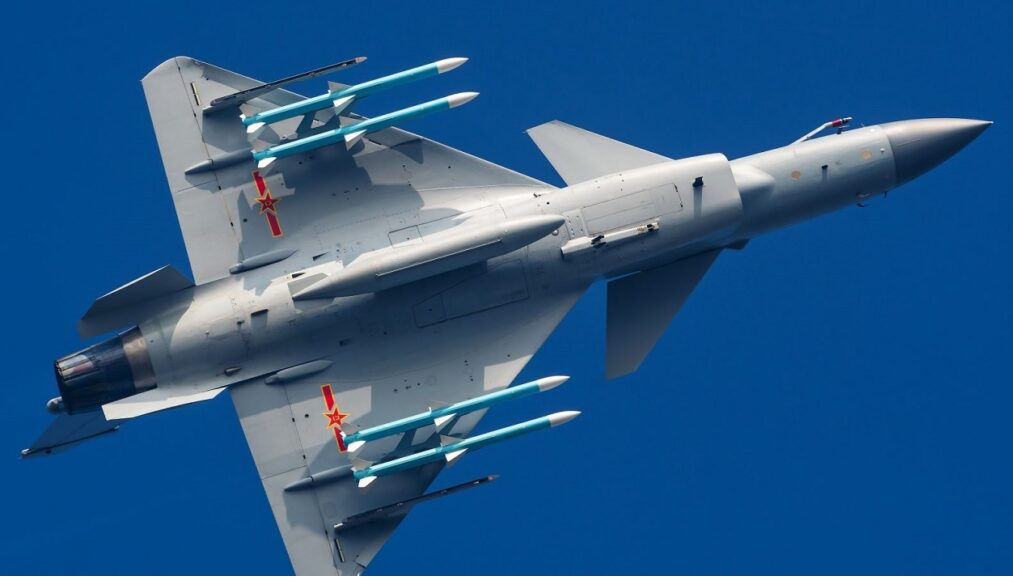
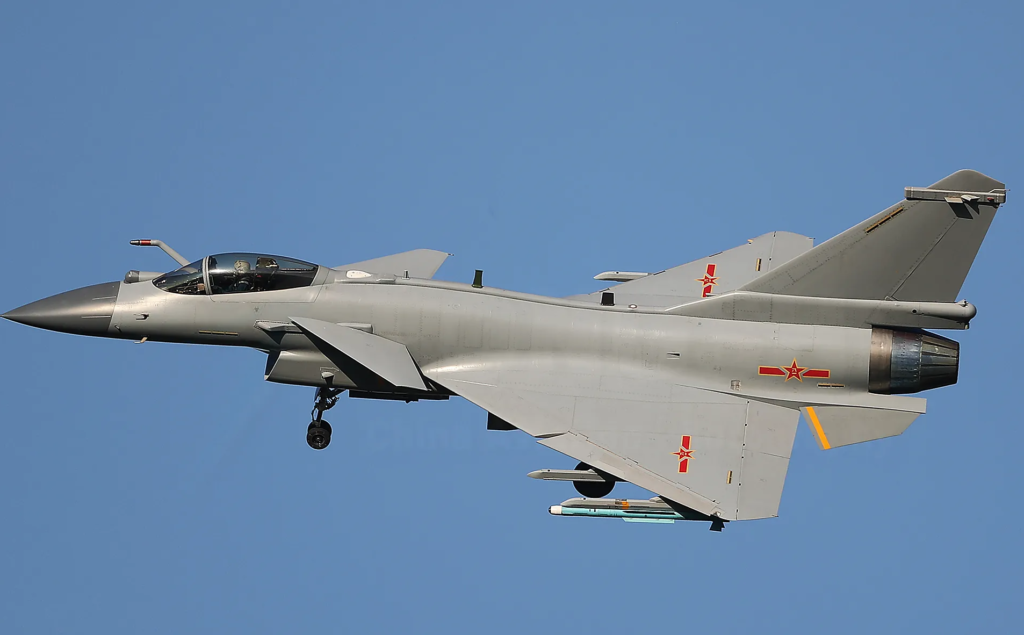
Which are the Indian air force fleet of SU-30 MKI-4+ generation heavyweight fighters. The Indian air force fielded SU-30s since the late 1990s and began to deploy the advanced MKI variant in 2002 which now makes up the backbone of the country’s combat fleet over approximately 270 are in service with more expected to be delivered in 2022. Should the Indian air force go up against the j-10c in the air-to-air combat the SU-30MKI is the most likely fighter to do so due to both how widely it is used and its elite status.
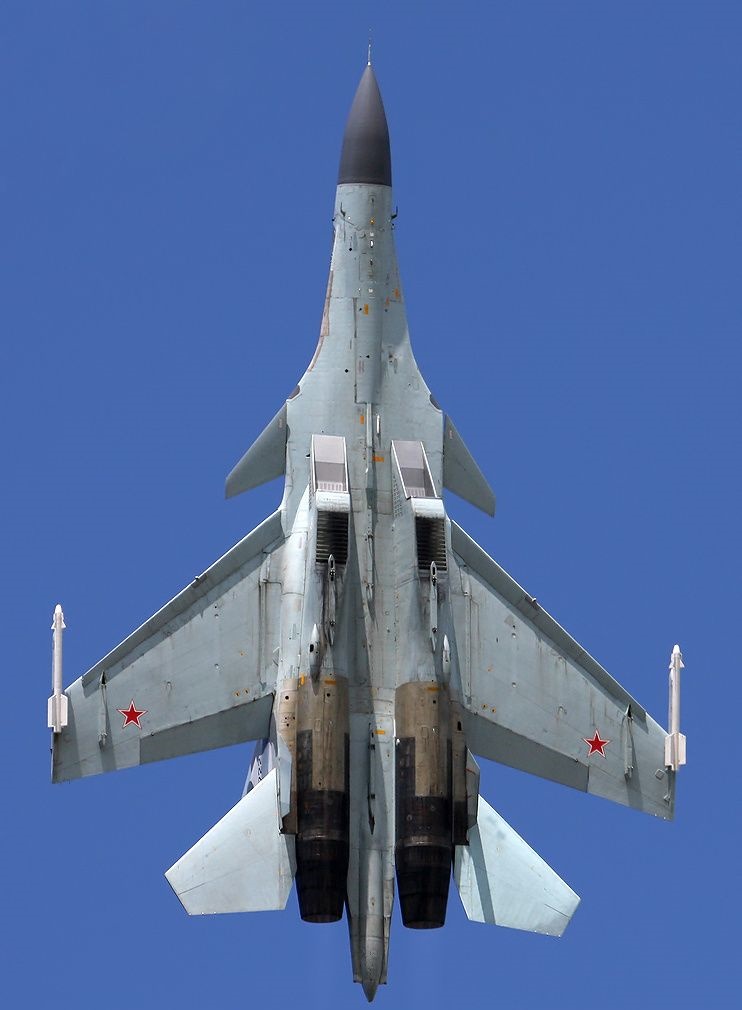
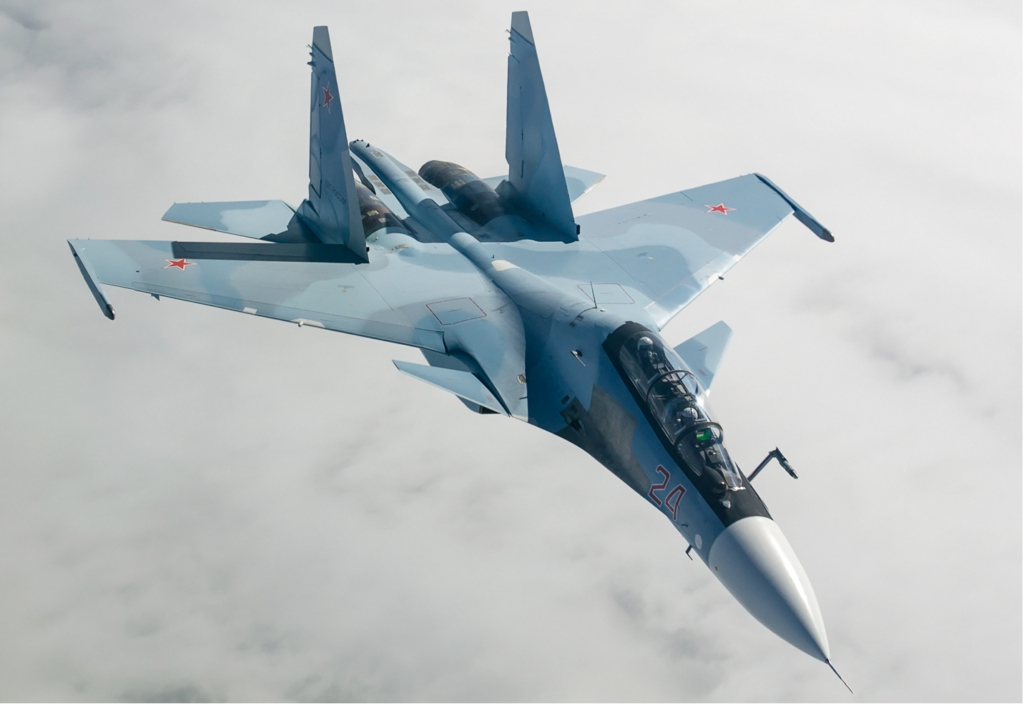
Like a heavyweight fighter the SU-30MKI has several considerable advantages over the J-10. See the aircraft’s endurance is significantly higher meaning it can carry considerably more ordinance over much longer distances. Which is valuable for offensive operations or long-range patrols.
CMPARISON||BEYOND VISUAL RATINGS J10-C vs SU-30MKI
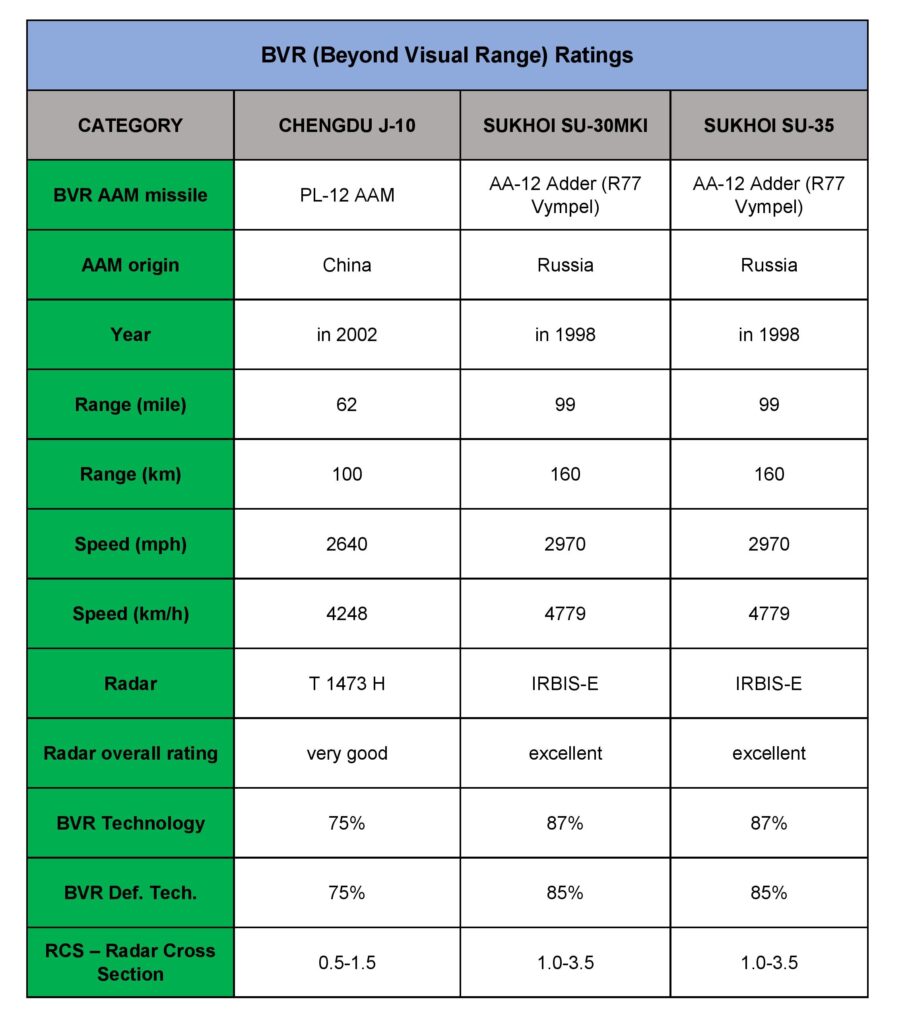
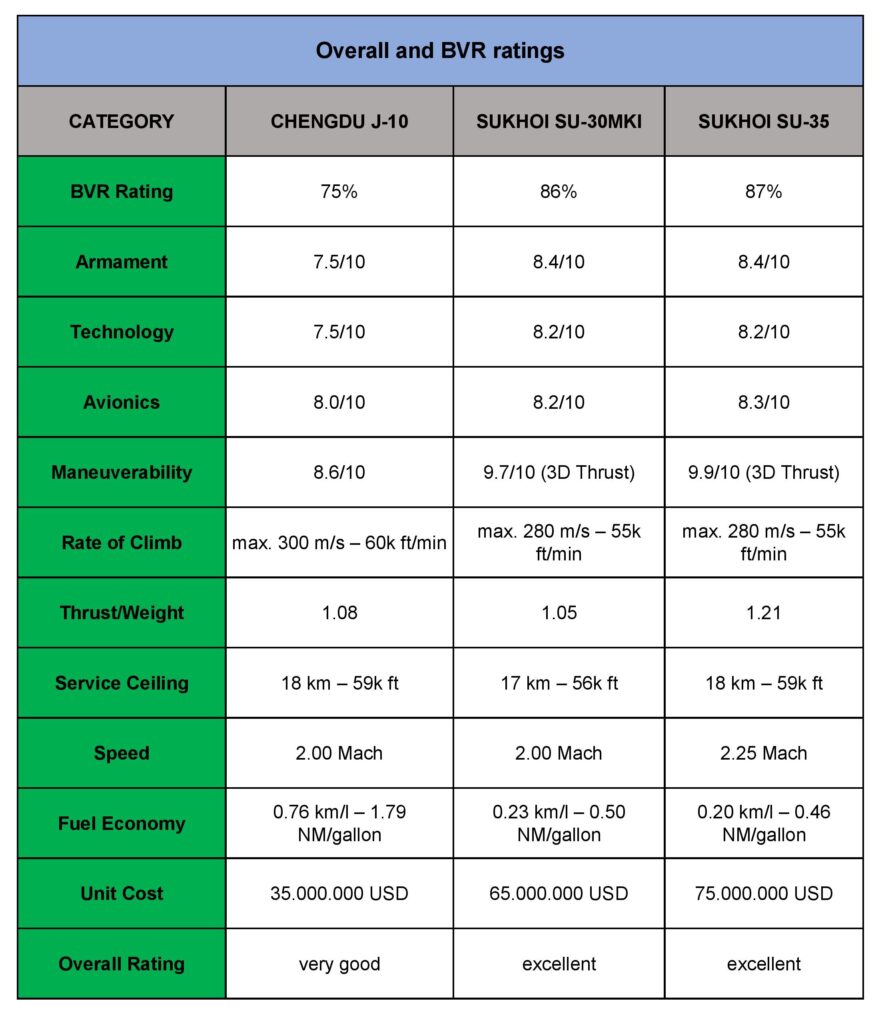
Its second seat accommodates a weapons systems officer which is valuable particularly under the strain of pulling extreme maneuvers or when engaging both ground-based and aerial targets simultaneously. Indeed, twin seats were the primary feature that Chinese fighter pilots stated gave the J-16 heavyweight fighter an advantage over the J-10c at mock engagements.
The SU-30s greater speed and altitude allow it to launch missiles with considerably more energy than rival fighters. This includes not only the J-10c, but the Rafael medium fighters which India recently acquired from France. Which are even slower and lower flying than the J-10c. While the J-10 is a lighter design it does have several significant advantages of its own.
While discussing J10-C vs SU-30MKI, J-10 entering service from 2018, 16 years after the SU-30MKI the aircraft benefits from China’s much larger technological base and scale of research and development and boasts superiority in avionics. In its sensors in electronics. The J-10c deploys an ISSA radar which although smaller than the peso radar of the SU-30MKI. It is considerably harder to jam more efficient and opens more possibilities for electronic warfare. The fighter deploys the pl-15 long-range air-to-air missile.
DOG FIGHT RATINGS
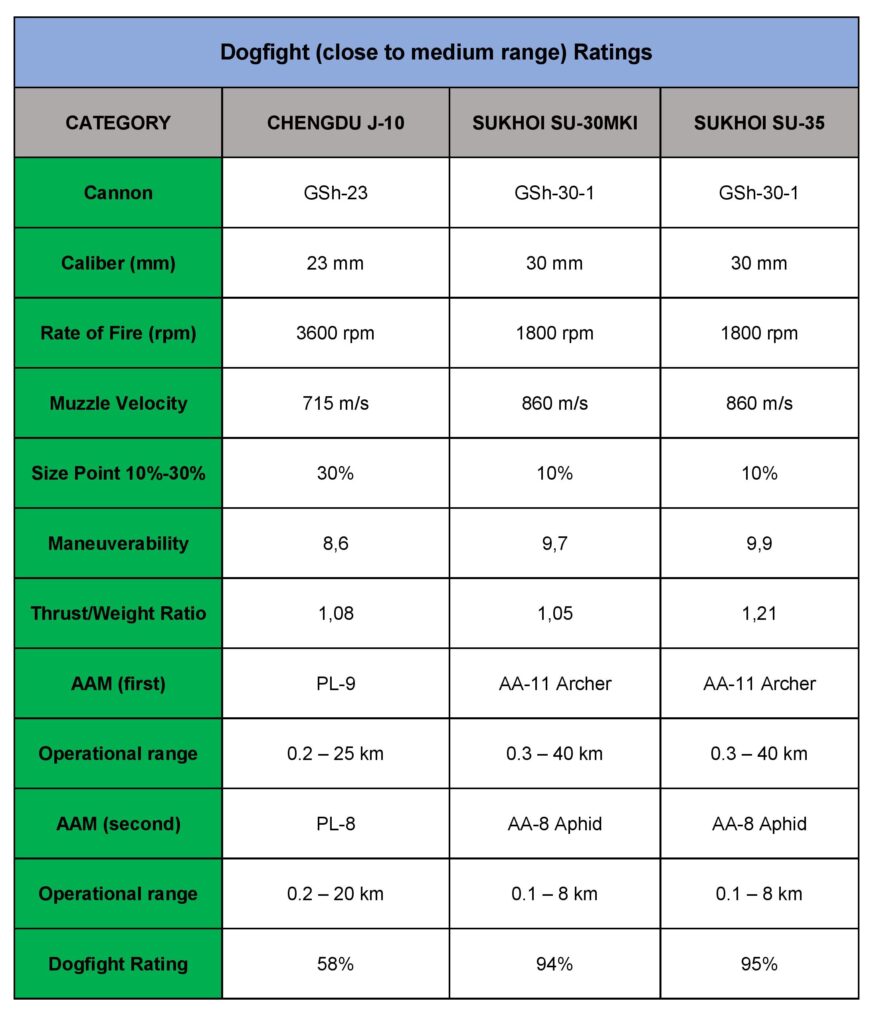
Which comfortably outperforms the Russian R-77 and French mica deployed by the SU-30 this applies not only in range whereby many estimates it can shoot over twice as far 250 to 300 kilometers versus 110 kilometers for R77 and 80 kilometers for mica, but also in sensors as the only operational air-to-air missile outside. This not only makes the pl-15 less vulnerable to jamming but also much more reliable and better able to form locks against stealth targets.
J10-C vs SU-30MKI, it is for standoff air-to-ground and anti-shipping missions both fighters deploy Mach 3 capable missiles. The YJ-93 for the J-10c based on the Russian KH-31 and the brahmas for the SU-30MKI. The brahmas are a much heavier but overall, more capable missile and benefits from the su-30s high endurance. Unlike the J10c which can rearm with the YJ93 at base. However, SU-30MKI units require modifications to use the brahmas with special units assigned to carry the missiles. Which is limiting the versatility of su-30 units for air-to-air combat at shorter ranges.
The J-10c pl-10 missile with high-off boresight targeting capabilities expects to provide an advantage albeit a less overwhelming one against those used by Indian fighters. The J10c is perhaps the only non-Russian fighter in the world that can match the SU-30MKI in maneuverability. With both using thrust vectoring engines although the lighter Chinese jet has a higher thrust weight ratio with its airframe making much more extensive use of light composite materials.
The J-10 altitude ceiling is the highest in the world for an operational single-engine fighter although still slightly lower than the SU-30MKI. Exploring J10-C vs SU-30MKI the J-10c primary advantage over the SU-30MKI aside from its much lower operational costs and maintenance needs. Its use of superior electronics and data links allows units to better and more reliably network with other assets.
CONCLUSION
Such as drones and air defense systems to tackle an adversary. It is the primary factor which allows J-10c to reportedly outmatch Russian built SU-35. Which is a heavyweight fighters and mock air battles 2020. The J-10c in Pakistani hands will pose a challenge to the Indian air force. It has not seen since the cold war with Indian superiority. The SU-30 MKI and before then from the mid-1980s by MIG-29s armed with R-27 missiles.
The SU-30MKI is relatively old as compared to more modern Russian fighter designs. It has the potential to bridge existing performance gaps. If not comfortably surpass the J-10c if modernized with next generation technologies. These include R-37m missiles, airbus e-peso radars or derivatives of the N036 ISSA radar and AL-41 engines. As well as new avionics and electronic warfare systems. The SU-30MKI is a higher-end fighter from the same weight range as the Chinese J-16. Upon entering service in 2002 experts think it is the most capable fighter in the world by a considerable margin.
20 years later many of its technologies are far from cutting edge which allows lighter but more sophisticated aircraft. Such as the J-10c to challenge its formerly unquestioned superiority in the region. Nevertheless, Pakistan’s J-10c acquisitions are bot able to reach even a fraction of India’s current SU-30MKI fleet size. However, with only a single squadron currently confirmed. Meaning the Indian air force will retain an overwhelming numerical advantage. Despite its top fighters being much heavier and more costly.
You can read about RUSSIA AND UKRAINE COMPARISON ECONNOMIC AND MILITARY wise from here.



